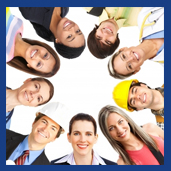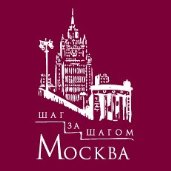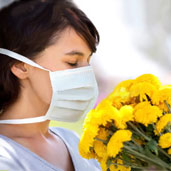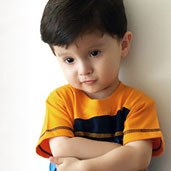Moscow legends about count Bruce
17.08.2015 22:26 Просмотров: 49
 We will tell you about one of the most remarkable Moscow residents, a contemporary of Peter the Great, Count Bruce, whose life gave rise to a great number of legends, many of which survive until today. Jacob Bruce was born in 1670 into an ancient Scottish family that once held the king's throne.
We will tell you about one of the most remarkable Moscow residents, a contemporary of Peter the Great, Count Bruce, whose life gave rise to a great number of legends, many of which survive until today. Jacob Bruce was born in 1670 into an ancient Scottish family that once held the king's throne.

During the rule of Cromwell, his father, William Bruce, had to leave his home country. After some time he settled in Russia. This was the time when Tsar Alexei, the father of Peter the Great, ruled the country. One of William's sons became St. Petersburg's first commandant, and as such supervised the building of the famous fortress of Peter and Paul.
Another of William's sons, the hero of this program Jacob Bruce, became a close associate of Peter the Great. He took part in most of Peter's military marches and accompanied him in his great mission to Europe. Jacob served to become a general and in the early 18th century was granted the title of count. As most of Peter's supporters, Bruce was a man of boundless energy and broad interests and had to give a share of his time to each of his occupations: military, diplomatic
and scientific. He went in for mathematics, physics, astronomy, carried out geographic research and translated academic books from German and English into Russian. At the city's navigation school he set up a first-rate observatory. Contemporaries described the count as a man of high intelligence, sharp wit and good memory.
In Peter's reign, Count Bruce ran the whole printing business. In the early 18th century he supervised the first edition of the Russian civil calendar, which, besides astronomic information, contained an astrological forecast for 1710 through 1821. The calendar and particularly its forecasts stirred up strong public interest and prompted numerous imitations. Although Bruce did not make it up but only supervised its edition, the calendar has gone down in history as the Bruce Calendar.
After Peter's death, Count Bruce resigned in 1726 and lived in Moscow ever since. But long before this, various intriguing rumors started spreading all over Moscow. People gossiped about the count's strange ways. There would be the light on in his windows throughout the night. Unheard-of devices made noise and produced scattering sparkles. Mysterious books in black leather covers and different retorts for chemical experiments would pile up on his desks. All this made people suspect that the Scot was engaged in witchcraft and black magic. For some reason this reputation appealed to Bruce and he would not miss the chance to provide more evidence to the rumors. Once in the summertime he invited guests to his country estate and treated them to a spectacular chemical experiment. Right before the guests' eyes he turned a small pond into a skating-rink. The guests stood speechless with surprise as Bruce laughed delighted: "Don't you want to go skating and refresh yourself on such a hot day?"
The count died a childless bachelor in 1735. After his death more and more really fantastic details were added to his life story. They developed into legends and those have had a long life. Bruce lived in one of the most picturesque parts in the center of Moscow near a Protestant church. When he died he was buried near this church. But neither the house, nor the church, nor the grave have survived.
What have survived are the stories about Count Bruce, a hero of Moscow's folklore. And here are a few of them:
The place where Bruce lived was overcrowded with all sorts of jars and pots with various mixtures. He had several telescopes. But he did most of his mysterious work at night; in an underground workshop. Indeed, Bruce was a- Jack of all trades. Once he created a house-maid out of flowers. She looked and acted like a real girl: cleaned the room and served coffee. Only she could not speak.
Once Peter the Great came to see Bruce.
"It's a good house-maid you have, Peter said. What a pity she can't speak. Is she dumb?"
"You see," Bruce explained, "she is not a real girl. She is made of flowers."
The Tsar would not believe:
"Don't talk rubbish. It isn't possible!"
"Well," Bruce said, "see for yourself!"
He took a pin out of the maid's hair and at once she fell into a heap of flowers. The Tsar was stunned: "Isn't it a miracle! But how could you do it?"
"It's all science," Bruce replied.
"You'd better confess," Peter demanded, "wasn't it all the result of black magic?"
To this Bruce said: "I have nothing to conceal. Here are my books and mixtures, look for yourself."
Peter looked through the books. All of them were scientific. But the wise Bruce did not show all the books to Peter. The most important ones on witchcraft were hidden in the underground laboratory. And they were very rare books too. Until today people have been looking for them. But all in vain.
Bruce could create anything. He made an eternal clock and bricked it up in the wall of his house. If you put your ear close to the wall, you could hear the clock ticking. Once he fixed a board on a wall of his house. At first people could not understand what it was all about. But then they saw that the board had something wonderful about it. If war was to begin, the board would turn red. After Bruce died people tried many times to cover the red with paint. They put on several layers of paint but the same the red would show.
And it was a real miracle when Bruce turned an old man into a young fellow. Yes, he worked hard to prepare necessary drugs. He decided to carry out the experiment first on an old dog. And a real bag of bones was that dog too. Bruce brought the dog into his underground laboratory, cut it into tiny pieces and washed the pieces three times. Then sprinkled them with some powder. In a minute the pieces reassembled. Bruce poured some mixture on them. And there was the dog back to life, jumping and playing around Bruce who shouted in delight: I've done it! Now I'll make all old men young. Let them live and enjoy themselves for ever.
Tsar Peter came to Bruce one day and asked him: "Where did you get such a nice dog from?"
And Bruce told the Tsar the whole story. Peter would not believe. Alright, Bruce said, bring me the oldest man you can find and I'll make a young fellow out of him. The Tsar's men found such an old man who could neither walk nor hear, who did not even remember his age. Bruce cut the old man into pieces, washed them in three waters and powdered and sprinkled. The amazed Tsar saw the pieces reassemble and a young fellow springing to his foot! Still Peter refused to believe his own eyes and ordered the young man out. Then he said to Bruce: "You must never do that again."
"Why shouldn't I?" Bruce shouted surprised.
"Because," Peter said, "no good will come of it. If all old men are turned into boys, there will be no death. What will life be like then? Even now people keep squabbling with one another, and if no one ever died they would fight for every inch of soil. Man should be satisfied with the lifetime he has." And Peter ordered Bruce to destroy all the drugs and powders and give up the whole business.
Bruce obeyed the Tsar's order with a new idea on his mind: to make a huge eagle out of steel plates and springs. When the eagle was ready, Bruce straddled him, pressed the spring and the eagle shot upward. Many a time did he fly over Moscow. People would pour out into the streets and look up at the eagle amazed and bewildered.
Sure, all this was playing with fire, and once Bruce did not return from his flight. The eagle took him away and no one had ever seen Bruce again. The Tsar deplored the loss and used to say there was no one like Bruce.
Here is another legend about Bruce as it was told by an old man in the 1920s.
Bruce was an astronomer and had all sorts of telescopes in his tower to study the stars at night. He could tell the time of solar and lunar eclipses, and made up a calendar. But his main occupation was sorcery. He had many books, all very old and rare. When he died many thought there was a lot of money left by him, and all rushed to look for the money and took no notice of his books and papers, just stamped on them as they lay scattered around. Of course, not all of these people were blockheads. A clever man, a German, turned up. He picked up all the books, plans and drawings and that was the last that was ever seen of him. He fled to Germany. And the Germans used these plans and drawings to make all their airplanes, telephones and telegraphs. It took them many a year to devise these things. A hundred or more of the most learned professors racked their brains on one man's ideas. And now all these professors, mechanics and engineers are putting on airs: "We've done it". But whose plans and drawings did they use! Why should they have rushed around Moscow looking for the papers of Bruce?
Bruce used to say that he drew all his knowledge from nature. One just had to learn how to do this.
Once Peter asked Bruce: "Well, Bruce, what do you think, will nature prevail over man or the other way around?"
To this Bruce replied: "It all depends on the man." He took a honeycomb and asked Peter: "Do you know how it is made?"
"Well," Peter said, "a bee flies from flower to flower sucks out the sweet sap and takes it to the hive."
"That's right," says Bruce, "but a fly too can suck out the sap. But why does it never produce any honey?"
"The fly," Peter replied, "never works. It only eats and messes up."
"And what about ants?" Bruce asked. "They never do anything else but work. Look at their dwellings. Aren't they just great? But what's the use of all this? They say, these ants are also good at sucking out the sweet. Try and throw a cigarette end to them, be sure, they wouldn't rejoice at it. Then try a piece of sugar. In a flash, there will be hosts of them falling on the piece. And the piece will vanish in a moment. Yet, there will be no honey in return. Well, it's true, if you stuff a bottle full of ants and keep them in it for a while you'll get ant spirit, which is a good remedy for rheumatism. As for flies, a spider is fond of them. Thinks them a real delicacy."
Sharp-witted though he was, Peter still could not understand what Bruce was driving at. And then he saw: "Well, if a bee takes the sap, it sorts it out and throws away what it doesn't need. While flies and ants just suck out the sap but don't know how to sort it out."
"You are right," Bruce said. "And it's the same with man. If he has it in him, he will overpower nature, if he hasn't, well he can work a hundred years on end and still arrive at nothing. And he who has a good head on his shoulders will be master of the situation."
And one more story. Once when the summer was at its height and it rained and thundered, Bruce appeared atop the tower and began to scatter about some powder. And look! There was heavy snow falling. And this with lightning flashing and thunder roaring. Just a few minutes passed and the whole city was covered with snow! A real winter around with snow on the roofs, snow on the ground and snow on the trees. Sure, people became all agitated: What's up? What a miracle!
Scared people got out into the streets. And there he was, standing on the tower and roaring with laughter. People recognized Bruce at once and scolded him because the snow was bad for fruit and vegetables. The snow would lie for an hour or two and then melt away.
But rain was beyond his power. Bruce could not stop it. Peter used to ask him about rain. "No," Bruce replied, "I cannot do it. I have tried everything. What I can, I do and I don't try to do the impossible."
Nor did Bruce understand the bird's language. A scholar and a wizard, but with no insight into the bird's language. This was revealed to King Solomon alone. He was the wise one, and had no use for any wonder working. Things came natural to Solomon, while Bruce got all he had by work and learning.
Those are but a few of the legends about Count Bruce. Today they may seem naive to a sophisticated listener but this is the way they have survived as part of our folklore.
Source: http://sputniknews.com/voiceofrussia/2008/06/09/197644/

See other:
 Nativity Church at Putinki
The Church of the Nativity of the Theotokos at Putinki is one of the most picturesque churches in Moscow and the last major tent-like church in the history of Russian a... Подробнее...
Nativity Church at Putinki
The Church of the Nativity of the Theotokos at Putinki is one of the most picturesque churches in Moscow and the last major tent-like church in the history of Russian a... Подробнее...  The Marfo-Mariinsky Convent
The angel standing on a cloud has blue wings and a lily in his hands. The angel is painted on a column in the Church of the Intercession of the Mother of God in the Mar... Подробнее...
The Marfo-Mariinsky Convent
The angel standing on a cloud has blue wings and a lily in his hands. The angel is painted on a column in the Church of the Intercession of the Mother of God in the Mar... Подробнее...  Vladimir Vysotsky remembered
Vladimir Vysotsky's legacy comprises of over 600 songs and over 100 poems. He sang his songs with the accompaniment of a “Russian” seven-string guitar.
Подробнее...
Vladimir Vysotsky remembered
Vladimir Vysotsky's legacy comprises of over 600 songs and over 100 poems. He sang his songs with the accompaniment of a “Russian” seven-string guitar.
Подробнее...  History of Moscow Monuments Moscow monuments....there are quite a lot of those in our city! Well, first of all let's get clear - there are so many monuments in Moscow that listing them all would pro... Подробнее...
History of Moscow Monuments Moscow monuments....there are quite a lot of those in our city! Well, first of all let's get clear - there are so many monuments in Moscow that listing them all would pro... Подробнее...  Eliseevsky Store in Moscow Eliseevsky store is probably one of the most famous stores in the entire Moscow. Do me a favor, if you're strolling along the beautiful Tverskaya st., don't forget to fin... Подробнее...
Eliseevsky Store in Moscow Eliseevsky store is probably one of the most famous stores in the entire Moscow. Do me a favor, if you're strolling along the beautiful Tverskaya st., don't forget to fin... Подробнее... Our Friends
Contact us
E-mail: admin@anothercity.ru








